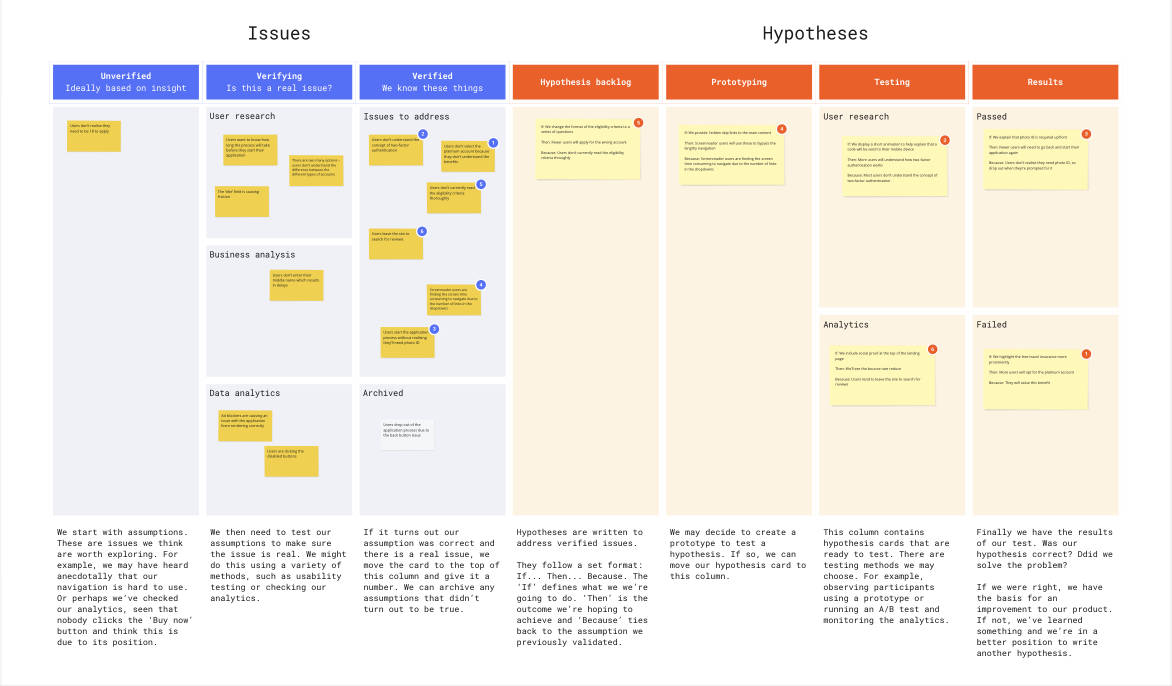Table of content
Airbnb, Uber, Stripe, and SpaceX are just a few examples of unicorn projects that made billions in less than ten years.
However, all success stories tend to have risks and pitfalls. Running a successful startup and building result-driven raising capital strategies is not a cakewalk. The threats are everywhere: from a potential cash flow challenge to poor marketing and product mistiming. Therefore, a startup founder should pass a long and complicated way until the project reaches the exit phase.
According to a study, a typical startup lasts five to ten years before being purchased or acquired by another company. But what exactly happens throughout this lifecycle?
This post will explain the critical startup development stages by relying on Devox Software’s deep expertise in modern solutions and digital business trends. We will also provide helpful tips and insights about building and scaling startups.
What Is a Startup Company?
Before diving deeper into the vital phases of a startup, let’s cover the essentials. So what is a startup company?
In a nutshell, a startup is an entrepreneurship model involving a newly created business idea to evolve and grow. It aims to occupy a particular market niche and address specific pain points of the end-users. In other words, the startup’s goal is to develop a unique product or service, enter the market, and scale up until it becomes essential for the customers.
Startups are focused on rapid business growth, using innovations and collaborative approaches. A startup requires investments, viable implementation strategies, and meticulous workflow techniques to achieve its goals.
Some of the most well-known startup companies are Airbnb, Uber, Instagram, WhatsApp, Netflix, Canva, Miro, Grammarly, Figma, and many more.
The Reasons for Startups’ Successes and Failures
Multiple factors may affect the startup’s success. A basic idea is often not enough. Not surprisingly, the startup failure rate is exceptionally high.
According to a survey, 90% of new businesses do not survive. Why? Well, there are numerous reasons. The most significant ones are lack of product-market fit (34%), marketing problems (22%), team issues (18%), and lack of investment (16%).
Let’s look at the most influential factors in more detail.
Lack of Product-Market Fit
This issue is the most common for young startups since it concerns the essence of entrepreneurial activity. But unfortunately, many young companies fail to address their customers’ actual pain points, withstand stiff competition, and convey their product’s value to the target audience. As a result, approximately 14% of startups fail because they don’t offer the end-users a product or service they truly need.
Marketing Problems
Even the most outstanding and innovative ideas may have no future without sufficient marketing efforts. Conversely, a lack of a result-driven marketing strategy may leave your startup unnoticed by target customers and investors. Thus, it’s worth paying extra attention to developing a website, doing comprehensive research, and monitoring key metrics.
Team Issues
Don’t underestimate the importance of the team working on your startup. People responsible for marketing, development, design, and analytics are the driving force of your project’s success. If you don’t have sufficient expertise and relevant specialists, the risk of failure increases dramatically. Moreover, soft skills such as entrepreneurial passion and strategic vision are also critical.
5 Startup Development Stages Explained
Every startup should experience several key stages on its way to market. Young companies do their best to scale quickly and avoid bottlenecks. These goals require significant effort from your team. That is why a consistent growth strategy is vital.
Let’s look at the most critical startup growth stages and practical approaches you may apply to succeed.
1. Ideation Stage
An idea is the core of any startup. That’s why the ideation stage occurs before the early development process begins. Here, the startup owners should identify the fundamental principles and values that will make their product great.
This phase’s purpose is to assess and validate the ideas to determine which ones are the most relevant and how to implement them properly.
However, a startup requires several more steps to help analyze your business idea, improve the development plan, and determine the future product’s value. That is why pre-seed and seed startup stages are crucial.
Pre-Seed Phase
The pre-seed stage is an initial period in a startup’s lifecycle where the founders launch the first official funding round. The core goal of this phase is to demonstrate that the product or service you want to develop meets the market’s needs. Here are the most critical goals of the pre-seed stage:
- Get the first investment in your idea.
- Validate the basic startup structure
- Develop the initial business plan
- Understand if the product fulfills the market’s need
Seed Phase
The seed stage is also known as the proof-of-concept stage. After validating ideas, startup founders continue to seek investments. This funding, called bootstrapping, often comes from the founders, their families, friends, and business partners. The average seed funding is approximately $2.2 million.
Here are some of the most common goals a company can achieve during the seed phase:
- Funds raised for launching the startup development process
- Prepare an initial marketing strategy
- Develop a prototype and/or a Proof of Concept (POC)
- Validate product-market fit
2. Early Stage
At the early startup stage, it’s time to start implementing your idea. Here, it would help if you had a team of all required specialists with relevant tech, product, marketing, and analytical expertise. On top of that, your company should keep validating the product by building an MVP.
MVP stands for Minimum Viable Product. It’s an early version of your business concept containing only essential features. Such a product’s goal is to assess the viability and see if your startup moves in the right direction. Furthermore, an MVP enables you to validate the product’s value without significant investments.
Here are the core goals you can achieve in the early startup phase:
- Build an MVP to check your product’s viability
- Define and implement the core features
- Shift your business plan or pivot if necessary
- Get the first clients and test the product
3. Growth Stage
At this point, the startup founders should know the market’s demand and understand whether their product fits it. Therefore, it’s time to expand, optimize, and seek more investments.
Everything depends on the product’s profitability and the target audience’s reaction. Thanks to Series A and Series B investments, the company can hire more specialists, upgrade technologies, do more research, and expand its marketing budget.
Here are the goals businesses strive to achieve at the growth stage:
- Get investments from venture capitalists
- Generate stable revenue
- Lead marketing and advertising campaigns
- Expand target audience
4. Expansion Stage
The growth stage focuses on reaching stability regarding client base and profits. However, it’s only a step towards further achievements. The expansion phase involves a more significant scale-up. The companies increase their business ambitions, striving to reach new markets and geographical areas, often overseas.
Additionally, many startups experience modifications to their business models. You can hire more professionals, establish a broader customer base, and develop new products.
Here are the objectives most startups aim to achieve at the expansion stage:
- Scale and enter new markets
- Expand products, features, and services
- Experience business internationalization
- Collaborate with other companies
5. Exit Stage
Finally, your startup has started to generate regular and stable revenue. The product has a sufficient client base and promising future growth prospects. After passing all startup stages of development and achieving the most critical goals, the founders can consider going public and selling their business. For that, business owners usually set an IPO.
IPO (Initial Public Offering) is a process of making a share of a private startup company available to the public. Therefore, a new investor can purchase some parts of your business and become your company’s shareholder.
An IPO can be beneficial for your business in many ways. Here are the most significant reasons for turning to IPO:
- Get long-term investments from public venture capitalists
- Take your financial and marketing capacity to a new level
- Attract more clients and partners to your business ecosystem
Tips to Follow the Right Startup Stages
Now, having learned more about the different stages of a startup and their specifics, let’s talk about more ways to go through all those phases and succeed. Here are several handy tips to follow when building a startup company.
Build a Comprehensive Research Plan
At the earliest startup stages of growth, it’s crucial to build a detailed plan specifying market research objectives, a list of prioritized features, target customers’ needs and pain points, and more. Such a roadmap will help you build your project more consistently while being on the same page with your team.
Study Your Competitors
Your startup idea should be unique, yet it’s unlikely no one else will provide similar products or services. Thus, you should carefully study the market and understand what your direct and indirect competitors offer. In particular, pay attention to the end-customers’ reviews to know what they lack when using other companies’ services.
Design a Prototype
It’s hard to persuade an investor to believe in your project if you have nothing to show. That’s why building a prototype, even a simple one, can make a difference in the initial rounds. It will help you demonstrate your product’s specifics and visualize its core value. On top of that, you can test a clickable design prototype with real customers and use their feedback to make early improvements.
Develop an MVP
As mentioned above, an MVP allows for building a basic product and testing it as early as possible. The development process won’t require significant time and resource investments. At the same time, it will help you see if the product is viable and competitive. In the early startup phase, an MVP is a perfect way to get your first customers, attract investors, and make the changes necessary for further growth.
Keep Consistent Documentation
Documenting all steps, decisions, and plans is vital when developing a startup. With well-established documentation, you can control workflows, ensure the strategy’s efficiency, and keep all stakeholders on the same page. Writing everything down might take some time, yet it will pay off in the long run.
Take a Step Towards Your Startup’s Success
Although the startup failure rate remains exceptionally high, it still leaves a great chance to succeed if acting wisely, consistently, and carefully. Every startup phase should be well-thought-out, planned, and analyzed, from ideation and research to MVP development and growth. It’s the only way to attract investors, scale up, and deliver a product that your customers won’t imagine their life without.
We hope our guide helped you understand the startup’s typical lifecycle. However, if you need more detailed advice on startup development, our experts are ready to help you.
We at Devox Software have rich experience providing custom web app development services with flexible, client-centered, and well-planned workflows. Our services include software outsourcing, dedicated team, staff augmentation, R&D office, and business process outsourcing.
Get in touch, and we will help you turn your startup idea into reality!















